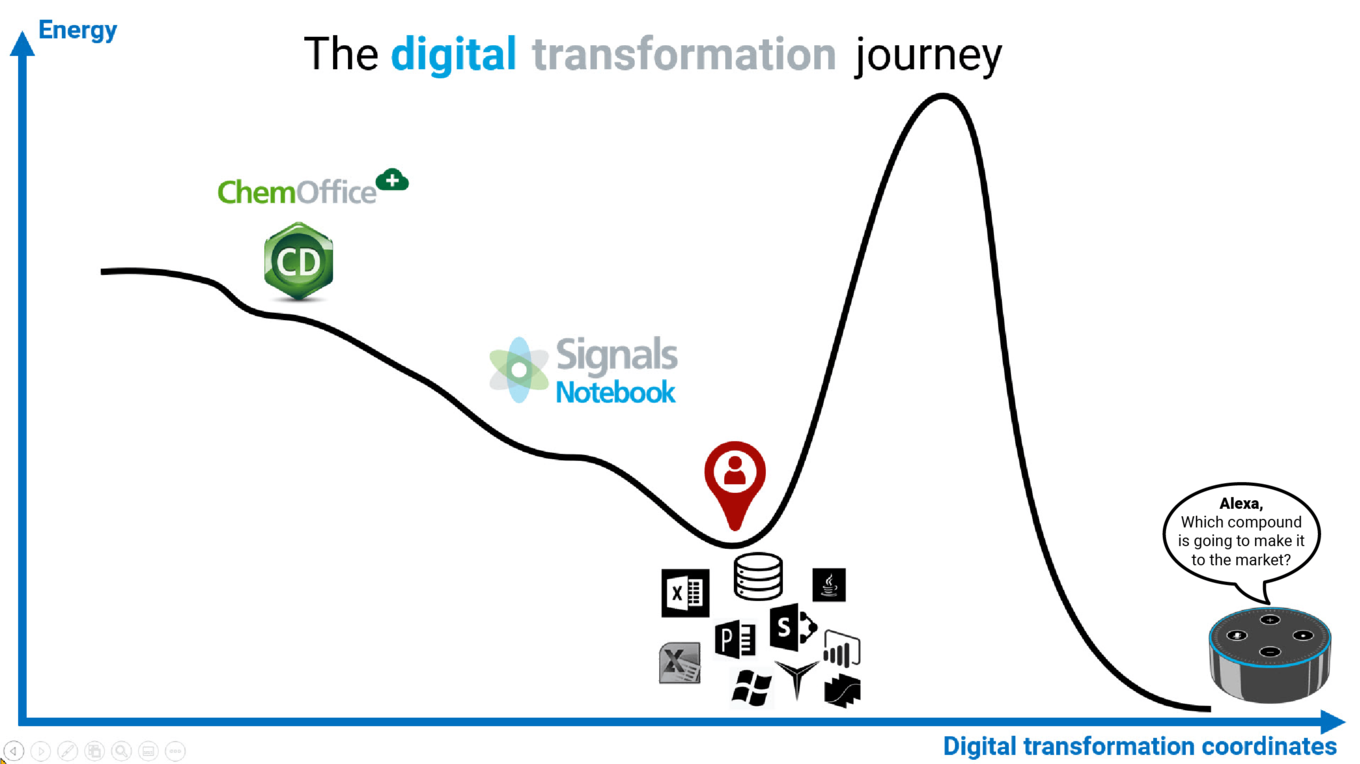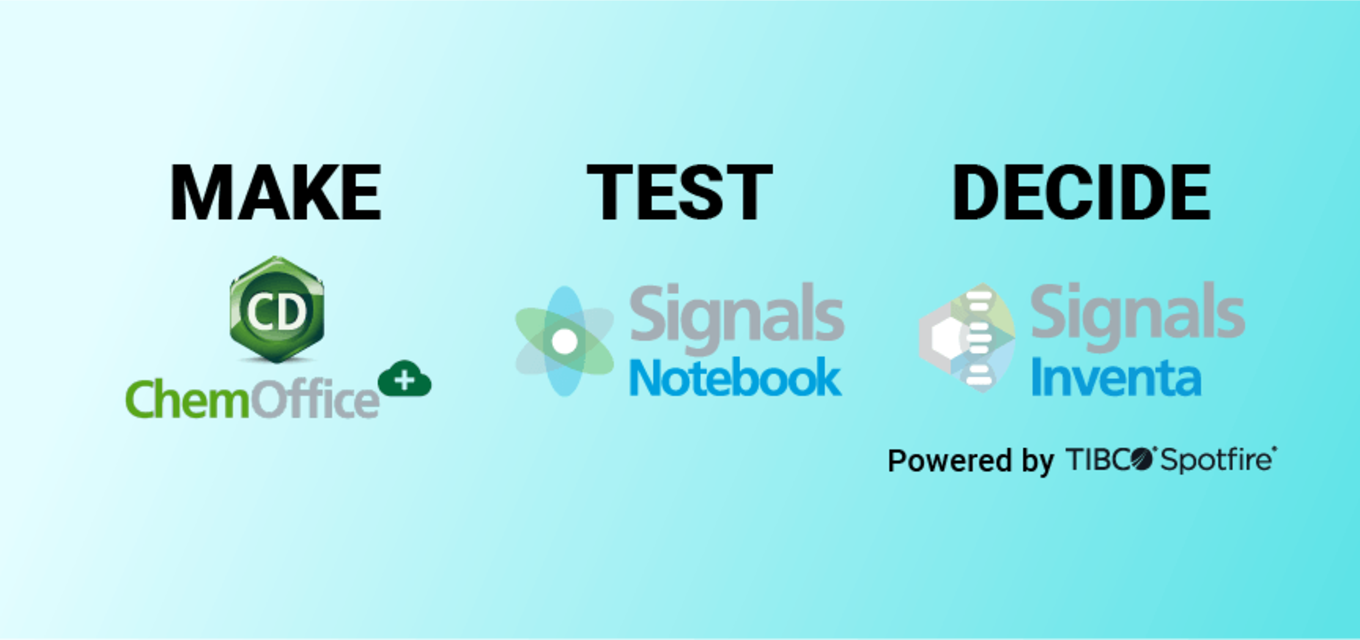How Cloud-Based Chemistry Can Simplify Life & Accelerate Discovery
If you could collect, locate, and manage data more effectively, how much more time could you spend analysing, discovering, and innovating?
For industrial chemists, the past years have seen an explosion of data from multiple sources. Data is routinely collected from published papers, instruments, databases, and experiments, and yet in many cases documents and spreadsheets are the principal tools used to extract meaningful conclusions.
The truth is, there is too much data, often unstructured, held in too many separate locations. It is possible to spend almost as much time uploading, organizing – and then trying to find information – as actually working on the results.
Moving to the latest cloud-based electronic notebooks (ELNs) can solve many of these issues, but chemists still show reluctance to make the change. In a recent Chemistry World webinar, a poll showed that only 20% of organizations surveyed had officially moved to the cloud and around 50% have plans to move to the cloud.
Fundamentally, if chemists could collect, locate, and manage data more effectively, how much more time could be devoted to analyzing, discovering, and innovating?
What’s your cloud migration activation energy?
The journey from paper notebooks via spreadsheets to cloud-based ELNs can be seen as a series of energy barriers. Moving from paper to Excel was reasonably easy, and surmounting the barrier required only a small energy ‘push.’ But even though most of the data is held electronically, it’s still not sufficiently curated or controlled to be useful.
In many cases chemistry workflows rely on a combination thousands of spreadsheets, PDFs and Word documents, with multiple logins to SharePoint, DropBox, Azure, AWS – not to mention commercial resources such as ChemACX and others. The result is less ‘data lake’ and more ‘data swamp.’ Looking for results is time-consuming, often boring, and can be overwhelming. Trying to understand data, identify patterns, and pinpoint significant results when faced with potentially millions of table rows is not humanly possible.
With the right features, ELNs can significantly mitigate these problems, particularly when considering the design of experiments. So how can chemists make the move to a fully integrated, cloud-based ELN

Over the energy hill
Revvity Signals all-cloud Signals Notebook and Signals Inventa embed an entirely new approach to data management for chemistry workflows. The Signals Research Suite solution replace the tedious upload, management, and search for information with a fully integrated, intuitive working environment that accelerates analysis, discovery, and innovation.
For example, experiments with multiple variables generate very large data tables. Selecting and adjusting a single variable – for the solvent concentration, perhaps – over many rows is a daunting, time-consuming task. For chemists seeking to optimize experiment design, whether for complex mixtures and formulations or for small molecules, Signals Notebook introduces a single interface that enables multiple tables to be updated simultaneously, eliminating taxing manual work, reducing error, and releasing time for innovation.
The Signals solutions follow a simple workflow: Make, Test, Decide. In almost all cases, chemists make new compounds, test (and store) the results, and then decide what do to next based on analysis.
Using the Make, Test, Decide workflow, Signals Inventa takes chemistry to the next level, by providing powerful tools to organize, analyze, and visualize data based on a complete history of past and current projects. Signals Inventa enables search by compound, molecule, structure, project, date, researcher, across almost any combination of dimensions and millions of rows research databases, spreadsheets, semi-structured documents, and more. Based on the results, chemists can generate new workflows, design new experiments, and initiate new compound registration.
Powered by data captured by Signals Notebook, Signals Inventa helps consume, analyze, and visualize chemical workflow and experimental data in new and insightful ways.
Critically, with the cloud-based Signals Notebook and Signals Inventa, there is no need for deep knowledge of the complexity or capacity of the underlying data infrastructure. Even with very large data sets, query results and visualizations are returned in just moments. Significantly, the self-service nature of Signals Inventa enables chemists to analyze and visualize results without relying on busy IT and data analytics staff. Using the huge scalability of cloud computing, analyses that would previously have taken months using on-premises resources can be completed in just minutes.
Exchanging data entropy for cloud order
Working with new molecules, designing new processes, and figuring out scalable production relies on data – ultimately, to make the world a better place. For example, formulating an adhesive that surgeons can use during operations, developing a safer flavoring for foodstuffs, or creating a non-toxic, biodegradable dye are noble ambitions.
Moving to the cloud can help to reach these goals by significantly reducing digital entropy. Integrated Signals Notebook and Signals Inventa eliminate the tedium of searching through file trees, databases, spreadsheets and more, releasing time for productive, enjoyable research.

Pierre Morieux, Ph.D.
Chemistry Product Marketing Manager, ChemDraw® Wizard, Revvity SignalsPierre Morieux is the Chemistry Product Marketing Manager at Revvity Signals, where he helps translate the various needs of chemists into time-saving and discovery-enabling integrated software applications. Before this role, Pierre has been the Global Product and Marketing manager for ChemDraw since 2017, where he has overseen the development and launch of versions 17 through 21 of ChemDraw and the ChemOffice Suite. Pierre was hired by Revvity Signals in 2012 as a Chemistry Field Application Scientist, a position he landed after publishing a viral YouTube video on “How to draw Viagra under 20 sec in ChemDraw”. Pierre holds a Chemical Engineering Degree from the ENSCP Chimie ParisTech (2006), a Ph.D. in Pharmaceutical Sciences from the University of North Carolina at Chapel Hill (2010) and did a Postdoc in Bioorganic Chemistry at the ISIS Institute of the University of Strasbourg, France.
